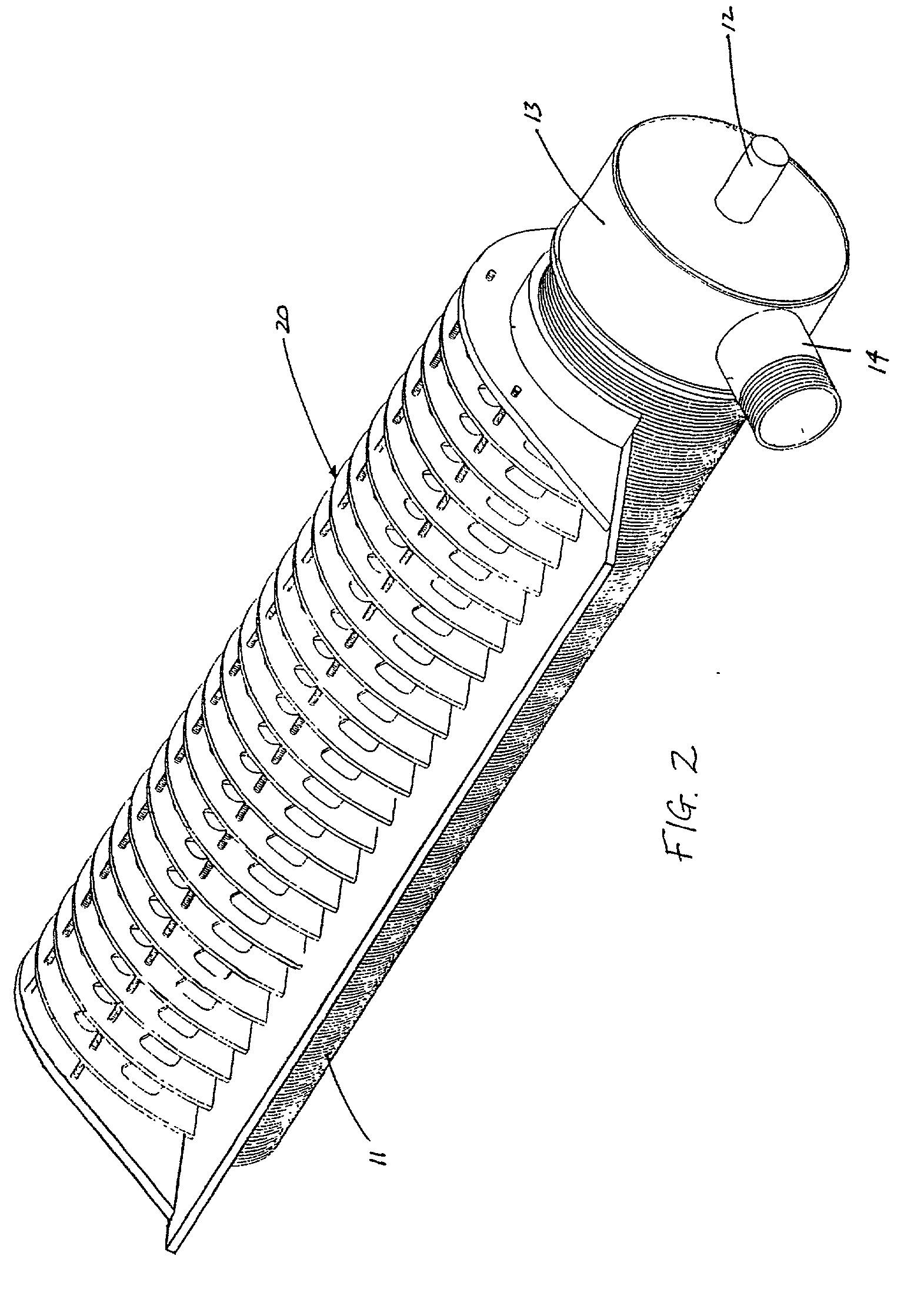Method and apparatus for removing fluids from drill cuttings
a technology of drilling cuttings and fluids, applied in the field of methods, can solve the problems of affecting the performance of drilling mud, and recirculation of drilling cuttings can also increase the wear of mud pumps and other mechanical equipment, and can be environmentally harmful
- Summary
- Abstract
- Description
- Claims
- Application Information
AI Technical Summary
Benefits of technology
Problems solved by technology
Method used
Image
Examples
Embodiment Construction
[0050] Referring to the drawings, FIG. 1 depicts a schematic overview representation of the mud system of a typical drilling rig. The flow of drilling mud within this mud system in FIG. 1 is in the direction of the arrows.
[0051] Still referring to FIG. 1, derrick 1 extends vertically over wellbore 2. Tubular work string 3 is inserted into wellbore 2, and extends from the earth's surface to a desired depth within said wellbore 2. Flow line 4a is connected to said tubular work string 3. Flow line 4b is connected to annular space 5 formed between the outer surface of tubular work string 3 and the inner surface of wellbore 2.
[0052] Still referring to FIG. 1, the bulk of the drilling mud for the depicted mud system is in mud pit 6. Mud from said mud pit 6 is circulated through the overall mud system depicted schematically in FIG. 1 via mud pump 7. The mud is pumped into tubular work string 3 through flow line 4a, circulated out the end 3a of tubing 3 up the annulus 5 of wellbore 2, and o...
PUM
| Property | Measurement | Unit |
|---|---|---|
| pressure | aaaaa | aaaaa |
| suction | aaaaa | aaaaa |
| length | aaaaa | aaaaa |
Abstract
Description
Claims
Application Information
 Login to View More
Login to View More - R&D
- Intellectual Property
- Life Sciences
- Materials
- Tech Scout
- Unparalleled Data Quality
- Higher Quality Content
- 60% Fewer Hallucinations
Browse by: Latest US Patents, China's latest patents, Technical Efficacy Thesaurus, Application Domain, Technology Topic, Popular Technical Reports.
© 2025 PatSnap. All rights reserved.Legal|Privacy policy|Modern Slavery Act Transparency Statement|Sitemap|About US| Contact US: help@patsnap.com



